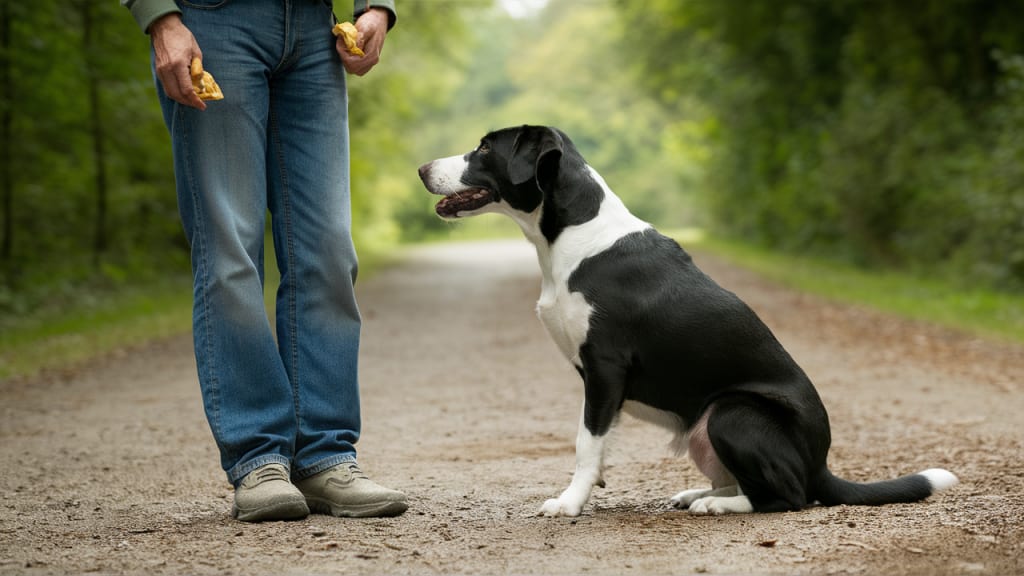Leash Training Your Dog
A Detailed Guide for Success

Leash training is a vital aspect of dog ownership that promotes safety, control, and enjoyable walks. Whether you have a puppy or an adult dog, mastering leash training can transform your outings. This guide will cover the essentials of leash training, from selecting the right equipment to managing common challenges.
The Importance of Leash Training
Ensuring Safety
Leash training is essential for your dog's safety. It prevents them from running into traffic, approaching dangerous animals, or getting lost. It also protects other people and pets from potential harm or unwanted interactions.
Enhancing Control
A leash gives you control over your dog's movements, helping you manage their behavior in public spaces. This control is crucial for preventing pulling, lunging, or jumping on strangers.
Promoting Exercise and Socialization
Regular walks are vital for your dog’s physical health and mental stimulation. Leash training allows your dog to explore the world safely, engage with different environments, and socialize with other dogs and people.
Essential Equipment for Leash Training
Choosing the Right Collar or Harness
Selecting the appropriate collar or harness is the first step. A flat collar is suitable for most dogs, but a harness, especially one designed to reduce pulling, can be beneficial. Avoid choke chains or prong collars, as they can cause injury and discomfort.
Selecting the Leash
A standard six-foot leash provides the right balance between control and freedom. Retractable leashes are not recommended for training because they can be inconsistent and hard to manage.
Treats for Positive Reinforcement
High-value treats are essential for training sessions. Choose something your dog loves but doesn’t get regularly. Treats should be small and easily consumable to keep your dog focused.
Steps to Leash Training Your Dog
Step 1: Getting Comfortable with the Equipment
Start by allowing your dog to get used to wearing their collar or harness. Let them wear it around the house for short periods, gradually increasing the duration. Attach the leash and let your dog drag it around under supervision to get accustomed to the sensation.
Step 2: Creating Positive Associations
Make the collar and leash positive objects. Whenever you put them on your dog, give them treats and praise. This creates a positive association and makes your dog more willing to cooperate during training.
Step 3: Starting Indoors
Begin training in a low-distraction environment like your home. Hold the leash and encourage your dog to follow you using treats and an upbeat voice. Reward them frequently for staying close and keeping the leash loose.
Step 4: Moving to the Outdoors
Once your dog is comfortable indoors, transition to a quiet outdoor area. Start with short sessions, gradually increasing the duration as your dog becomes more confident. Keep distractions to a minimum initially.
Step 5: Teaching the 'Heel' Command
Teaching your dog to walk by your side is crucial. Start with your dog sitting at your side. Hold a treat in your hand, say "heel," and take a step forward. Reward your dog if they stay by your side. Practice this consistently, increasing the number of steps before giving the treat.
Step 6: Addressing Pulling
Pulling on the leash is a common issue. Here are some strategies to manage it:
Stop and Wait: If your dog pulls, stop walking and wait until they return to your side. Reward them and then resume walking.
Change Direction: Change direction abruptly when your dog pulls to encourage them to pay attention to you.
No-Pull Harness: Consider using a front-clip harness to discourage pulling by redirecting your dog's movement.
Step 7: Introducing Distractions Gradually
As your dog becomes more proficient, introduce distractions slowly. Practice in busier areas, rewarding your dog for staying focused on you. This helps them learn to ignore distractions and remain calm.
Advanced Leash Training Techniques
Loose Leash Walking
Loose leash walking means your dog walks beside you with a slack leash. To achieve this:
Frequent Rewards: Initially, reward your dog frequently for walking with a loose leash.
Increase Distance Gradually: As your dog improves, increase the distance between rewards.
Consistent Practice: Practice regularly in different environments to reinforce the behavior.
Long-Line Training
A long-line leash, typically 15 to 30 feet, is useful for training recall and allowing more freedom in safe areas. Practice commands like “come” and “stay” while maintaining control.
Off-Leash Training
Once your dog is reliable on a leash, start off-leash training in secure, enclosed areas. Practice recall and other commands without the leash. Ensure the area is safe and your dog is under control.
Troubleshooting Common Problems
Persistent Pulling
If your dog continues to pull despite training, seek help from a professional trainer. Persistent pulling can indicate underlying issues that need expert attention.
Fear or Anxiety on the Leash
Some dogs may exhibit fear or anxiety on a leash. Help them by:
Gradual Exposure: Slowly introduce your dog to new environments, starting with less busy areas.
Positive Reinforcement: Use treats and praise to reward calm behavior.
Comfort Items: Bring a favorite toy or blanket to help soothe your dog.
Lunging at People or Dogs
Lunging can be due to excitement, fear, or aggression. Address this by:
Maintaining Distance: Keep a safe distance from the trigger until your dog is more comfortable.
Desensitization and Counter-Conditioning: Gradually expose your dog to the trigger at a distance they can tolerate, rewarding calm behavior.
Professional Help: If lunging persists, consult a professional trainer or behaviorist.
Maintaining Good Leash Behavior
Consistent Practice
Consistency is key to maintaining good leash behavior. Make leash training a regular part of your routine and practice in various environments.
Positive Reinforcement
Continue using positive reinforcement to encourage desired behaviors. Praise, treats, and playtime are effective rewards that motivate your dog.
Patience and Persistence
Leash training takes time and patience. Stay persistent, keep training sessions short and positive, and celebrate small victories.
Conclusion
Leash training is a vital skill for both you and your dog. It ensures safety, enhances your bond, and makes outings more enjoyable. By following the steps in this guide, you can train your dog to walk calmly and confidently on a leash. Remember, patience and consistency are essential. Happy walking!
About the Creator
Quinn Mercer
A dog trainer and animal behavior enthusiast with over 11 years of experience, I share practical, positive reinforcement techniques to help you build a strong bond with your furry friend.
Enjoyed the story? Support the Creator.
Subscribe for free to receive all their stories in your feed. You could also pledge your support or give them a one-off tip, letting them know you appreciate their work.






Comments
There are no comments for this story
Be the first to respond and start the conversation.